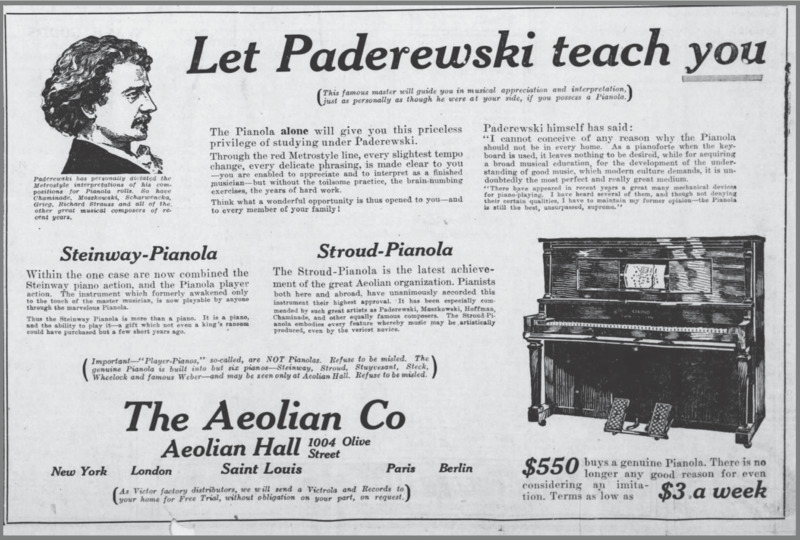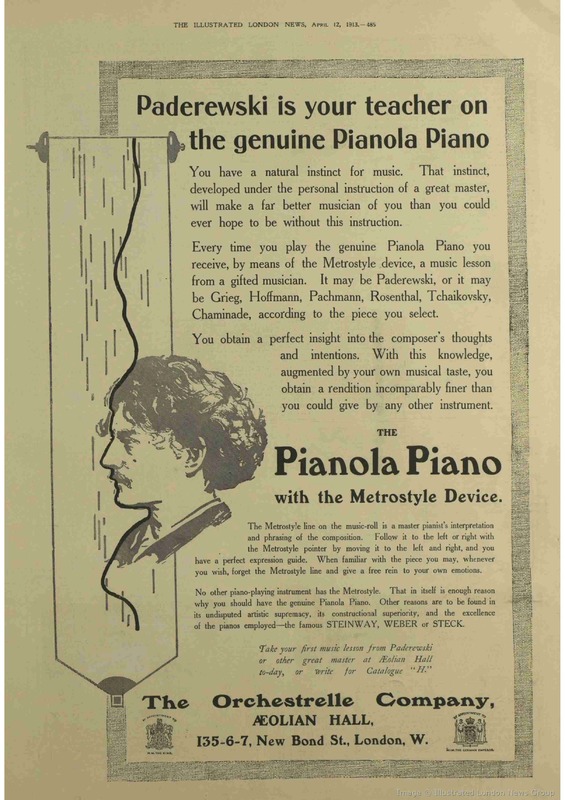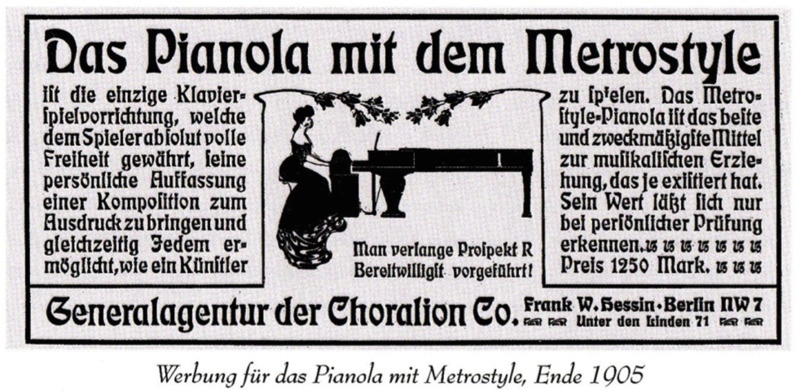Stephanie Probst
Playing like Paderewski, Chaminade and Co:
Music education with the pianola and music rolls
Various advertisements published in 1913 suggest that by purchasing a pianola, one would almost be acquiring the popular Polish pianist (and politician) Ignacy Jan Paderewski (1860-1941) as a teacher. From the very beginning, in fact, Paderewski was an emphatic advocate of the technical and pedagogical achievements of this new musical instrument, which was intended to enable everyone to become a virtuoso in their own living rooms. Of course, the celebrated pianist did not personally look over the shoulder of all who tried their hand at the pianistic repertoire of the 19th century. The presence of the “great master” nevertheless introduced players of the pianola to music-making.
“Let Paderewski teach you.”
How can that happen?
And what is the pianola?
The pianola (sometimes called “player piano”) is a pneumatically operated instrument developed around 1900 that plays music from perforated paper rolls. The pneumatic device and holder for the music rolls could either be pushed in front of a regular piano (hence the name “push-up”) or was already built into the piano.
The music is encoded into perforated paper rolls. In the instrument, the rolls run over a tracker bar with up to 88 holes. Each of the holes corresponds to a tone on the keyboard and is connected to a small pneumatic system with hoses and valves. As soon as a hole in the music roll releases the air flow, the pneumatic mechanism is activated and the corresponding note is struck.
To create the necessary suction, the player must pedal. The more vigorous the pedaling is, the greater is the suction, and correspondingly, the louder the tones are. Pedaling thus creates differences in tone color and dynamics and even slight accents of individual tones. This allows the player some control over the musical expression.
The Aeolian Company, a U.S. maker of mechanical musical instruments that marketed the first pianola, also patented the so-called Metrostyle in 1903. This invention has two parts and constitutes the core of the above advertisements. The first element of the invention is a hand-operated lever on the instrument that can regulate changes in the playing tempo of the music roll.
As the roll unwinds, the performer can intervene in the music, e.g. accelerate or slow down to shape climactic moments or moments of relaxation (“rubato”), or create the regular temporal fluctuations that bring a musical interpretation to life.
The second element of the invention was a red line drawn on the rolls that the player could follow with the lever. Movement of the red line to the right indicated an acceleration of the music; movement to the left indicated a slow-down. In this manner, the Metrostyle line defined a specific musical interpretation that could be easily realized without any musical knowledge. Of course, the player could also ignore the red line and perform their own interpretation of the piece.
The Pianola Institute offers a detailed presentation of the pianola and its history.
Citation: Stephanie Probst, ‘Playing like Paderewski, Chaminade and Co: Music education with the pianola and music rolls’, in: Materiality of Musical Instruments. A Virtual Exhibition.



